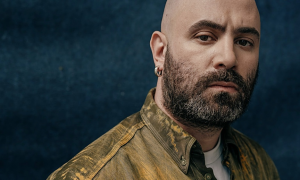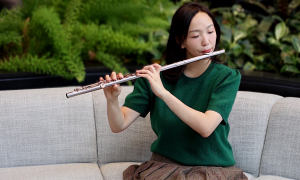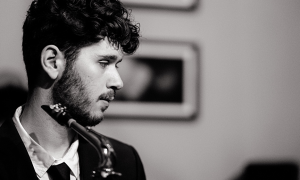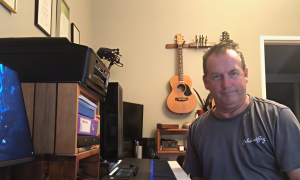Home » Jazz Articles » Take Five With... » Take Five with Yulia
Take Five with Yulia
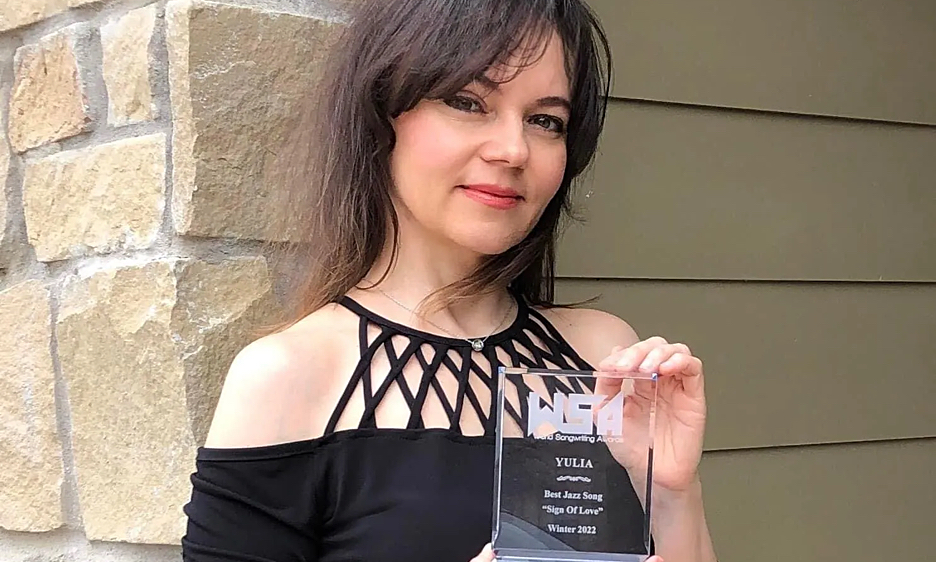
Meet Yulia
I was born in Siberia. In 2000 there were cardinal changes in my life—I moved to the USA. My formation as a musician began in childhood, from the age of age I began to learn to play the piano, and a little later to compose and record my music on sheet music. I studied at a specialized music school, then at the conservatory. I have always loved to compose music and this love has remained with me for the rest of my life. I am grateful for all the awards that I have received for my music in international competitions—and for all the positive comments of my friends and strangers who experience positive emotions when listening to my compositions. I am very blessed that all my songs are recorded by top producers with amazing musicians. I could not even dream of this before! The album Best Wishes (debuts November 2022) featured producers such as Lew Laing Jr., Michael B. Sutton, Sergey Ignatov and musicians like Sekou Bunch, Timothy Bailey Jr., Darrel Crooks, Gordon Campbell, James Gadson, James Manning, Andre Frappier, David Brunelle, Steve Alaniz, Vandell Andrew, Alexey Nikolaev, Merlon Devine, Sergey Ignatov.Instruments:
Piano and keyboards.Teachers and/or influences?
I have been in music since childhood. Having entered a specialized music school, I began to learn to play the piano. The main and only musical direction I received was classical and modern academic music all the years of music school and conservatory. But pop songs were heard on radio and television, and in the late '80s, records began to appear with foreign performers of pop, rock, and blues music. It was more difficult with jazz in our country, but in the '90s it was already possible to find recordings of Miles Davis, Al Di Meola, Weather Report, George Benson and more through friends. I listened everything that was possible to find.I knew I wanted to be a musician when...
My school had a combined education. We studied mathematics, history, geography, literature, and similar subjects—but we also had solfeggio, musical literature, choir, and musical instrument lessons. It was so natural for me that music is in every day of my life that I did not even doubt from an early age that I would be a musician.Your sound and approach to music.
I just write what comes to my mind. Then others can decide how it sounds. I can write in different genres—but I don't think a lot about what it sounds like.Your teaching approach
Everyone chooses his own direction, and the main thing is to help a person, and not to hinder the creative direction. Let him try—experiment—create.Your dream band
The ideal band is one in which the musicians are interested in being, where they are happy, and where the musicians care about what the final creative result will be.Favorite venue
My favorite place is where there are grateful listeners.Your favorite recording in your discography and why?
I don't have favorite recording. More precisely—my favorite is the music that suits the mood at the moment.What do you think is the most important thing you are contributing musically?
I know from the comments of people who listen to my music that my music helps someone to pray -helps someone to smile or relax after a hard day and it simply cheers someone up. Bringing joy and light to people—thanking and glorifying God is my main contribution in art.Did you know...
I like gardening. I love this whole process. We must always take care of the plants, water them in time and look after pests and weeds and fertilize the soil. This reminds us that in the same way we must take care of our soul, our thoughts, and feelings—if we want to bear good fruit. The first jazz album I bought was:
Restless by Bob James (1978)Music you are listening to now:
I listen to a lot of different radio stations that play very familiar hits and also a new smooth jazz music station that plays many independent artists. Good music is always beautiful regardless of the year of creation!How would you describe the state of jazz today?
The state of jazz is like the state of a river that is constantly moving and renewing itself thanks to new streams and underground springs. Until people stop seeing beauty and expressing their inspiration—this genre will live on.What are some of the essential requirements to keep jazz alive and growing?
Listen to music—support and get inspired—learn—practice—add something that's yours and keep repeating in the same order.What is in the near future?
In the near feature is the upcoming new release album BEST WISHES—also performances of this album and work on more new music.What is your greatest fear when you perform?
I know that for a performance to be successful you need to prepare for it in advance. And as a believer—I trust God. When I follow this, there is no fear in the performance.What is your favorite song to whistle or sing in the shower?
I don't sing in the shower. During the day I listen to the piano playing of my students for 6 hours—the rest of the time I listen to other music. And in the shower, I enjoy the sounds of water—trying not to think about anything at all. This is my time alone with myself.By Day:
I give private piano and music theory lessons.If I weren't a jazz musician, I would be a:
I would be a different genre musician!If I could have dinner with anyone from history, who would it be and why?
I don't want to go back in time, but for the time being I consider it a blessing to have lunch or dinner conversations with any nice people.Did you know...
I like gardening. I love this whole process. We must always take care of the plants, water them in time and look after pests and weeds and fertilize the soil. This reminds us that in the same way we must take care of our soul, our thoughts, and feelings—if we want to bear good fruit.
Tags
PREVIOUS / NEXT
Support All About Jazz
 All About Jazz has been a pillar of jazz since 1995, championing it as an art form and, more importantly, supporting the musicians who make it. Our enduring commitment has made "AAJ" one of the most culturally important websites of its kind, read by hundreds of thousands of fans, musicians and industry figures every month.
All About Jazz has been a pillar of jazz since 1995, championing it as an art form and, more importantly, supporting the musicians who make it. Our enduring commitment has made "AAJ" one of the most culturally important websites of its kind, read by hundreds of thousands of fans, musicians and industry figures every month.








